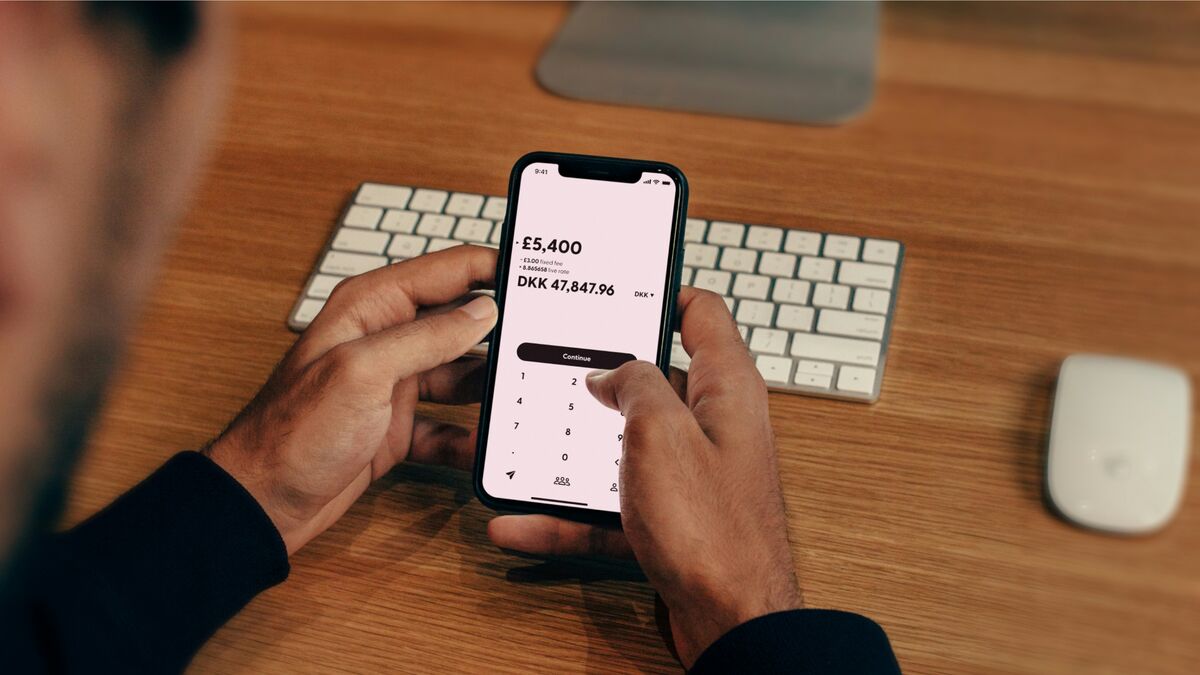Banking Security: What You Need to Know
A comprehensive guide to banking security best practices and how Finthy protects your financial data.

The Modern Banking Security Landscape
In today’s digital age, banking security has evolved far beyond simple passwords and PIN numbers. With the rise of online banking, mobile applications, and financial technology platforms, protecting your financial information requires understanding a complex ecosystem of security measures, threats, and best practices.
This is especially critical in Latin America, where digital banking adoption has accelerated rapidly, and cybercriminals increasingly target financial services. Whether you’re banking in Mexico, Chile, Brazil, or across multiple countries, understanding modern banking security is essential for protecting your financial well-being.
Understanding the Threat Landscape
Common Banking Security Threats
Phishing Attacks
- What it is: Fraudulent emails, texts, or calls impersonating your bank
- How it works: Criminals trick you into revealing login credentials or personal information
- Regional concern: Particularly common in Spanish and Portuguese-speaking markets
- Example: Fake emails claiming urgent account verification needed
Account Takeover
- What it is: Criminals gain unauthorized access to your banking accounts
- How it works: Using stolen credentials, social engineering, or malware
- Impact: Direct theft of funds, unauthorized transactions, identity theft
- Prevention: Multi-factor authentication, strong passwords, account monitoring
SIM Swapping
- What it is: Criminals transfer your phone number to their device
- Why it’s dangerous: Bypasses SMS-based two-factor authentication
- Growing threat: Particularly problematic for mobile-first banking in Latin America
- Protection: Use authenticator apps instead of SMS when possible
ATM Skimming
- What it is: Devices attached to ATMs that steal card information
- How to spot: Loose card readers, unusual attachments, hidden cameras
- Regional hotspots: Tourist areas, poorly lit locations
- Prevention: Use ATMs inside bank branches when possible
Man-in-the-Middle Attacks
- What it is: Criminals intercept communications between you and your bank
- Common scenarios: Public Wi-Fi networks, compromised routers
- Risk factors: Using banking apps on unsecured networks
- Protection: VPN usage, avoiding public Wi-Fi for banking
Banking Security Standards and Regulations
International Standards
PCI DSS (Payment Card Industry Data Security Standard)
- Global standard for credit card security
- Required for all businesses processing card payments
- Covers data encryption, access controls, network security
- Regular compliance audits and updates
ISO 27001
- International information security management standard
- Comprehensive framework for protecting sensitive data
- Used by banks and financial institutions worldwide
- Continuous improvement and risk assessment processes
Regional Regulations
Mexico: CNBV (Comisión Nacional Bancaria y de Valores)
- Regulates banking cybersecurity requirements
- Mandates incident reporting and response procedures
- Requires customer notification for data breaches
- Oversees fintech security compliance
Chile: CMF (Comisión para el Mercado Financiero)
- Sets cybersecurity guidelines for financial institutions
- Requires risk management frameworks
- Mandates business continuity planning
- Oversees open banking security standards
Brazil: BACEN (Banco Central do Brasil)
- Comprehensive cybersecurity regulations (Resolution 4,658)
- Requires security governance and risk management
- Mandates incident response and recovery plans
- Oversees PIX payment system security
Essential Banking Security Best Practices
1. Strong Authentication
Password Security
- Length: Minimum 12 characters, ideally 16+
- Complexity: Mix of uppercase, lowercase, numbers, and symbols
- Uniqueness: Never reuse banking passwords elsewhere
- Management: Use a reputable password manager
Multi-Factor Authentication (MFA)
- Enable everywhere: On all banking accounts and financial apps
- Authenticator apps: Prefer Google Authenticator or Authy over SMS
- Backup codes: Store securely for account recovery
- Biometrics: Use fingerprint or face recognition when available
2. Device Security
Mobile Banking Security
- App downloads: Only from official app stores
- Updates: Keep banking apps and OS updated
- Screen locks: Use strong PINs, passwords, or biometrics
- Public Wi-Fi: Never use for banking transactions
Computer Security
- Antivirus software: Keep updated and running
- Browser security: Use updated browsers with security features
- Private browsing: Consider for sensitive banking sessions
- Automatic logoff: Configure for idle banking sessions
3. Transaction Monitoring
Regular Account Reviews
- Daily checks: Review account balances and recent transactions
- Statement analysis: Monthly detailed review of all activity
- Alert setup: Enable notifications for all transactions
- Dispute timeline: Report suspicious activity within 24-48 hours
Transaction Verification
- Confirmation emails: Verify all transaction notifications
- Receipt matching: Keep and verify physical/digital receipts
- Large transaction alerts: Set thresholds for immediate notification
- International transaction monitoring: Extra vigilance for cross-border activity
4. Communication Security
Legitimate Bank Communication
- Official channels: Banks never ask for credentials via email/phone
- Website verification: Always type bank URLs directly
- Call verification: If unsure, hang up and call the bank directly
- Suspicious links: Never click links in financial emails
Social Engineering Awareness
- Information sharing: Never share account details on social media
- Phishing awareness: Be skeptical of urgent security requests
- Verification procedures: Understand your bank’s legitimate contact methods
- Employee training: If you’re a business owner, train staff on these risks
How Finthy Protects Your Financial Data
Technical Security Measures
Bank-Level Encryption
- TLS 1.3: Latest encryption for data in transit
- AES-256: Military-grade encryption for stored data
- End-to-end encryption: Data encrypted from your device to our servers
- Key management: Secure encryption key storage and rotation
Zero-Knowledge Architecture
- No credential storage: We never store your banking passwords
- Token-based authentication: Secure API connections without exposing credentials
- Data minimization: We only collect necessary information
- Local processing: Sensitive calculations performed on your device when possible
Access Controls
- Role-based permissions: Team members only access necessary data
- Multi-factor authentication: Required for all system access
- Audit logging: Complete tracking of all data access
- Regular access reviews: Quarterly permission audits
Compliance and Certifications
Regulatory Compliance
- PCI DSS Level 1: Highest level of payment card security
- SOC 2 Type II: Independent security audit certification
- ISO 27001: Information security management compliance
- GDPR/LGPD: Data privacy regulation compliance
Third-Party Security
- Penetration testing: Quarterly external security assessments
- Vulnerability scanning: Continuous automated security monitoring
- Bug bounty program: Incentivized security research
- Security partnerships: Collaboration with leading cybersecurity firms
Operational Security
Secure Development
- Security by design: Security considerations from initial development
- Code reviews: All code reviewed for security vulnerabilities
- Automated testing: Continuous security testing in development pipeline
- Regular updates: Prompt security patches and improvements
Incident Response
- 24/7 monitoring: Continuous security monitoring and alerting
- Response team: Dedicated security incident response team
- Communication plan: Clear procedures for user notification
- Recovery procedures: Tested disaster recovery and business continuity plans
Security Best Practices for Different Banking Scenarios
Cross-Border Banking
Multi-Country Account Management
- VPN considerations: Some banks block VPN traffic
- Travel notifications: Inform banks of international travel
- Time zone awareness: Monitor accounts across different time zones
- Currency monitoring: Watch for unauthorized currency conversions
International Transfer Security
- Recipient verification: Double-check all recipient information
- Transfer limits: Set daily/monthly limits for international transfers
- Confirmation procedures: Use multiple channels to verify large transfers
- Documentation: Keep detailed records of all international transactions
Mobile Banking Security
App Security
- Official downloads: Only download apps from official stores
- App permissions: Review and limit app permissions
- Session management: Log out of banking apps when finished
- Screen capture protection: Enable screenshot blocking if available
Device Security
- Lost device procedures: Know how to remotely deactivate banking access
- SIM security: Use SIM PINs and contact carrier immediately if SIM is lost
- Backup security: Secure backup of important financial information
- Public charging: Avoid public USB charging stations for devices with banking apps
Business Banking Security
Employee Access Management
- Role separation: Separate initiation and approval of transactions
- Access reviews: Regular review of employee banking access
- Training programs: Regular security awareness training
- Incident procedures: Clear procedures for security incident reporting
Transaction Controls
- Dual authorization: Require multiple approvals for large transactions
- Time-based restrictions: Limit banking access to business hours
- IP restrictions: Limit access to specific office locations
- Transaction monitoring: Enhanced monitoring for business accounts
Responding to Security Incidents
Immediate Response Steps
If You Suspect Compromise
- Change passwords immediately: All banking and related account passwords
- Contact your bank: Report suspected fraud via official phone numbers
- Monitor accounts: Check all accounts for unauthorized activity
- Document everything: Keep records of all suspicious activity
- File reports: Consider police reports for significant fraud
Account Recovery
- Bank procedures: Follow your bank’s specific recovery procedures
- Documentation requirements: Gather required identity and account verification
- Timeline expectations: Understand typical recovery timeframes
- Temporary restrictions: Be prepared for temporary account limitations
Prevention After an Incident
Security Assessment
- Full password audit: Change all potentially compromised passwords
- Device security review: Scan all devices for malware
- Account monitoring: Increase monitoring frequency temporarily
- Security tool evaluation: Consider additional security tools or services
Long-term Security Improvements
- Authentication upgrades: Implement stronger authentication methods
- Monitoring enhancements: Set up additional account alerts
- Regular security reviews: Schedule periodic security assessments
- Education updates: Stay current on new security threats and best practices
The Future of Banking Security
Emerging Technologies
Biometric Authentication
- Behavioral biometrics: Analysis of typing patterns and device usage
- Voice recognition: Secure authentication through voice patterns
- Multi-modal biometrics: Combining multiple biometric factors
- Continuous authentication: Ongoing identity verification during sessions
Artificial Intelligence and Machine Learning
- Fraud detection: AI-powered transaction monitoring
- Risk assessment: Dynamic risk scoring for transactions
- Pattern recognition: Identification of suspicious behavioral patterns
- Predictive security: Anticipating and preventing security threats
Blockchain and Distributed Security
- Immutable transaction records: Blockchain-based transaction logging
- Decentralized identity: User-controlled identity verification
- Smart contracts: Automated security and compliance enforcement
- Distributed authentication: Reducing single points of failure
Regulatory Evolution
Open Banking Security
- API security standards: Secure interfaces for third-party access
- Consent management: Granular control over data sharing
- Real-time monitoring: Enhanced monitoring of third-party access
- Liability frameworks: Clear responsibility for security breaches
Privacy Regulations
- Data minimization: Collecting only necessary information
- Consent management: Clear, granular user consent mechanisms
- Right to deletion: Secure data deletion procedures
- Cross-border data protection: Harmonized international privacy standards
Conclusion: Building a Secure Financial Future
Banking security is not a destination but an ongoing journey. As technology evolves and new threats emerge, the security measures protecting your financial information must evolve as well. The key to maintaining strong banking security lies in understanding the threats, implementing best practices, choosing secure financial services, and staying informed about emerging security trends.
At Finthy, we’re committed to providing not just innovative financial management tools, but also industry-leading security that protects your financial data across all the countries where you bank. Our multi-layered security approach, combined with your adherence to security best practices, creates a robust defense against financial threats.
Remember that security is a shared responsibility. While financial institutions and fintech companies like Finthy implement sophisticated security measures, the security of your financial information also depends on your actions and awareness. By following the best practices outlined in this guide, staying vigilant about potential threats, and choosing secure financial services, you can significantly reduce your risk of financial fraud and identity theft.
The digital financial landscape will continue to evolve, bringing new opportunities and new challenges. By staying informed and maintaining strong security practices, you can confidently navigate this landscape and take full advantage of the benefits that modern financial technology offers.
Ready to experience secure, modern financial management? Try Finthy and see how our bank-level security protects your financial data across Mexico, Chile, and Brazil.
Want to stay updated on the latest security threats and best practices? Subscribe to our newsletter for monthly security insights and tips.

